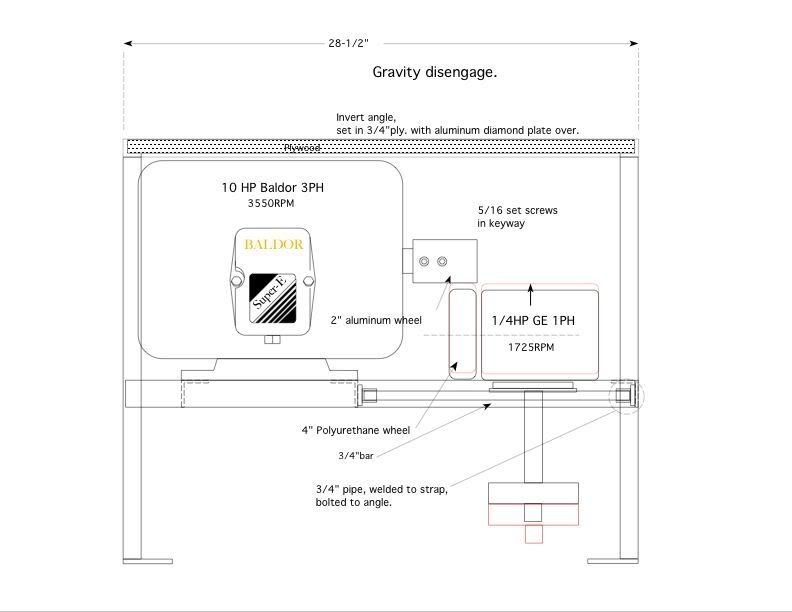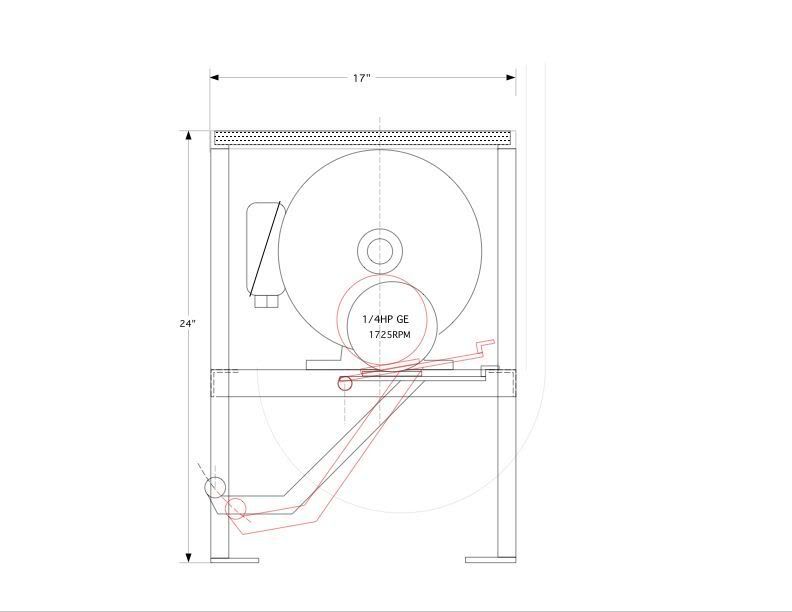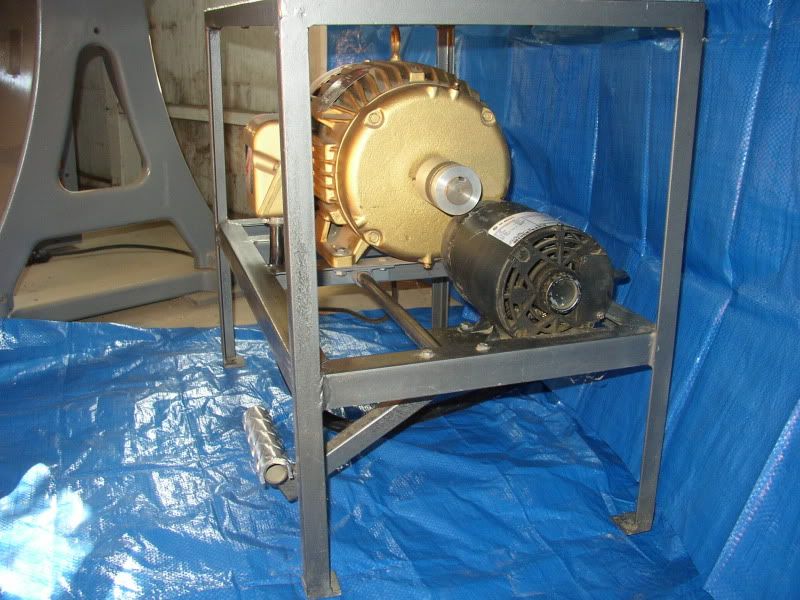Robert is that motor solid gold or only gold-leafed?

I especially like the diamond plate on the foot pedal. That's one
classy rig. I myself of course prefer the gravity engage, rather
than the gravity disengage!
Anyhow as mentioned a 3450 idler can easily be started
with a 1725 pony motor, just size the drive pulley about twice
the size of the driven one. For the OP, unless the idler is
wired for the higher voltage you simply are not getting it
going fast enough to lock in.
Jim
At only around $1,200 from Baldor, I suspect it's the cheap gold-leafed version but of course cheap ol' Bob, (can't help it Jim, I'm Scot) picked it up locally for $125, NOS, still bolted to the factory pallet.
I had a little diamond plate left over when I covered the top and my flip-flop was taking the beautiful hammered metal paint off the pedal, ca-ca. I rolled a little piece with a little notch for the arm, to keep it in place and sprung it over the tube.
About covering the top, I embedded 6 T-nuts in the top of the plywood, bolted it into the angle from below, then smeared it with construction adhesive, diamond plate held tight to it with several pieces of 90lb RR rail for 12 hours.
For me,
clean and functional starts on paper and stays there until I can't improve it any more. Then it's easy to bang it out without disappointment. Eliminates mis-starts and re-do's.
I brag about it only taking part of a Saturday to build but design took probably a week of spare time evening drawing, (several more sheets than posted) before making my shopping list. Then I bid on the motors, run capacitors, a NOS Elgin jeweled hour meter, (5 bucks, he-he) rotary switch to select which phase to send to the volt meter etc.
Had all else, big disconnect, smaller control box, all conductors, all the metal, fasteners, paint etc. on hand.
I suspect the other "braggers" spend a little time on design/shopping list/aquisition too, that they don't include in build time.
Saturday evening I painted it and Sunday morning I bolted the top on and clipped on the clutch pedal cover.
The ten or so NOS run capacitors I bought as a lot for "nothing", still sit in my electrical drawer, waiting for the day that the RPC or one of my machines hints that they'd like a little correction.
Up to 5HP, (K & T 2H) seem happy as a lark, oblivious to whatever imbalance may be in the system.
Too lazy to balance? Maybe but it's more that I'm cheap and am still waiting to "steal" a Fluke 30 to do it right. Besides, that would run the cost over the "less than $200" I like to brag about. Still going to do it though, then I'll say, "but I use the Fluke on other things too, tool, doesn't count."
This past summer, (100F desert, ambient shop) I ran a series of sophisticated tests. Whenever I thought about it, I put my hand on the idler to test temp. Never more than warm. I kept the accurate log in my head.

The fan is big, and @ 3450RPM, makes a blast worthy of a wind tunnel, as might be expected for ten horses buried in tightly closed gold-leafed cast iron, TEFC. Might be cast aluminum. The blast is loud but I think I'll not trim the plastic fan blades, I can take the racket, don't want to fall into the problem had by the cheap native American self-moyle, as he dropped his bloody tomahawk and uttered,
"ugh, too much.'
Bob











